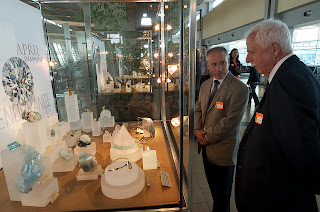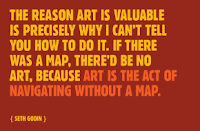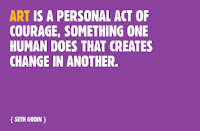and guest scholar for the Fabergé exhibition.
At the end of the nineteenth century, Russia had one of the fastest growing economies in the world. Out of this economic boom was born one of the greatest jewelry houses in the world, the House of Fabergé. Carl Fabergé set the standard for taste and elegance in the daily living of the not only the Imperial Court, but of the new wealthy upper class created by the industrial revolution. Fashion was synonymous with Fabergé, and he influenced the way society lived and socialized.
This exhibition is stunning on it’s own but after hearing Adams informative and exciting talk it really came to life! He relayed the politics, class structure and mood of Russians during this time in history. Bringing to light reasons for the increased interest by the upper classes for the great design houses that came into their own during this time…like Cartier, Bulgari and the house started by Carl Faberge.
“Many of the pieces have imperial provenance,” said Timothy B. Adams, a San Diego art historian and Fabergé scholar. The McFerrin collection, while only six-and-a-half years old, he said, is “one of the largest Fabergé collections in the United States right now.”
Very familiar with this particular collection because he is an Art Advisor to the McFerrin family, Tim Adams did his thesis on Faberge. One of the things that really stood out to me was his point that Faberge was so much more that Imperial Eggs…they worked in stone and presentation pieces and some of the finest jewelry of the time.
“We really enjoy collecting, and we try to collect the more historical things,” said Dorothy McFerrin, who acquired the collection with husband Arthur, president of KMCO Group of Houston, a chemical company.
 |
| St. Petersburg location |
The one statement that stayed with me is that their were approximately 150,000 pieces produced by the design house of Faberge before it was forced to close, and they were all one-of-a-kind pieces. In it’s heyday Faberge employed over 500 artists, designers and goldsmiths. It is said the Faberge paid extremely well and most of his staff stayed throughout their career. In what Adams described as the first “Artist Co-op” the grand St. Petersburg shop was massive -a bottom level that was retail – a large workshop and the family had living space on the top level.
Faberge was a trained goldsmith but as the firm grew he became more of a stylist – setting the tone and personally detailing the customer’s needs. But he very much influenced the style and look that we all have come to expect from the design house of Faberge
 |
| Moscow Shop |
Faberge counted his sons among the 500+ staff as well as several “Workmasters” – most of Finnish decent…but of the most famous, Michael Perchin, designed the Imperial Eggs from 1885 to 1903, was Russian; Henrik Wigstrom, a Finn, assumed Perchin’s position following his death in 1903 and was responsible for the Imperial Eggs through 1917. Another Finn, August Holstrom was a Senior member of the firm and head Jewelry Designer.
Interesting Fact: Faberge was one of the first to employ a woman in what was and to this day still is predominantly a man’s world. Hired to record in watercolors all of the items being produced in the Moscow shop at a mere 20 years old, Alma Pihl was granddaughter of August Holmstrom and daughter of Oscar Pihl who was the head jeweler of the Moscow branch. At just 25, Alma became an integral part of the firm assuming a prestigious position and later entrusted with the Nobel commission, creating some of Faberge’s most famous pieces, the quartz with diamond “Frost” collection.

“When her uncle August Holmstrom took over her grandfather’s workshop she was invited to come on as an artist who would keep detailed watercolor drawings of all the items being produced in the shop. She was a mere twenty years old when she joined him in 1909. It did not take long for her talent to be recognized and she was promoted to assistant designer and entrusted with the commission from Dr. Emanuel Nobel for a number of small brooches that would remind the recipient of a Russian winter. Alma was inspired while looking out the window at icicles suspended from the windowpane. She immediately began drawing designs for what would become Fabergé’s line of “frost flowers” – jewelry made of quartz and diamonds. This winter theme would lead to an even grander design – that of the Winter Egg that was presented to the Dowager Empress in 1913, but even this as not the end of Pihl creative genius. The following year she was put in charge of the design for the Tsarina Easter egg. For this she chose a mosaic design that emulated the petit point design which she watched her mother executing one winter’s eve.”
There is a very detailed timeline of Faberge and the Romanoffs HERE
The Exhibition
FABERGÉ: IMPERIAL JEWELER TO THE TSARS
Saturday, June 23 – Sunday, January 06, 2013
Discover the spectacular designs of Peter Carl Fabergé. the master goldsmith and legendary jeweler still celebrated for his inventive designs and meticulous craftsmanship, through a special exhibition, Fabergé: Imperial Jeweler to the Tsars.
The House of Fabergé has a reputation for turning the everyday into the extraordinary. Perhaps best known for Imperial Easter Eggs created for the Russian Royal family, the House of Fabergé also fashioned jewelry and luxurious gifts for many ruling families of Europe, as well as other wealthy patrons. From elegantly simple to breathtakingly ornate, the jewelry, clocks, picture frames, boxes and eggs in this collection have been thoughtfully selected to exemplify extraordinary materials and workmanship.
In recent years, the McFerrin Collection has become one of the world’s most important private collections of Fabergé. While many of the pieces in this collection have been featured individually in other exhibitions and publications over the past 60 years, this is a rare opportunity to see this magnificent collection.

 EMPRESS JOSEPHINE TIARA
EMPRESS JOSEPHINE TIARAFabergé created this diamond tiara around 1890. The stunning briolette diamonds were a gift from Tsar Alexander I to the Empress Josephine after her divorce from Napoleon Bonaparte. This piece is one of only a few tiaras ever made by Fabergé.
THE NOBEL ICE EGG
Tsar Alexander III commissioned the first egg ever created by the House of Fabergé in 1885 as an Easter present for his wife, Tsarina Maria Feodorovna. His son Nicholas II later commissioned such treasures for his wife Alexandra and for his mother, continuing a tradition that would last more than 30 years. Fabergé made eggs for only a small number of other clients; one of those was Swedish industrialist Dr. Emanuel Nobel, who commissioned this treasure between 1913 and 1914. This piece, a jeweled, enameled presentation egg, is also referred to as the “Snowflake Egg,” its shell ingeniously enameled and engraved to simulate the tracery of frost against a misted ground. It opens to reveal a “surprise”—a rock crystal and diamond pendant watch. The unique watch design was created specifically for Dr. Nobel and interpreted in other jewelry pieces by Fabergé, some of which Dr. Nobel gave as favors at his dinner parties. Several examples of these “ice jewels” are included in the exhibition.

FIRE SCREEN PICTURE FRAME
This intricately decorated picture frame (made between 1908-1917) of gold, platinum and enamel is meant to be viewed from both sides and is arguably one of the finest examples of gold work ever produced by Fabergé. One side features a photograph of Tsar Nicholas II, and the other his wife, Empress Alexandra Feodorovna. This was probably a gift from the Tsar to his mother, the Dowager Empress Maria Feodorovna. The form was most likely inspired by a fire screen, created by George Jacob that was in her apartment.
NICHOLAS II PRESENTATION BOX
The Imperial Russian court was renowned for the lavish gifts presented to foreign dignitaries visiting Russia. Fabergé made hundreds of presentation boxes, but many connoisseurs consider this his finest. Made of gold and decorated with enamel and diamonds, the box features the cipher of Tsar Nicholas II on the cover. The Emperor presented the box to Leon Bourgeois, a French politician and statesman in 1902. Bourgeois was one of 90 foreigners to receive a snuffbox with the Emperor’s initials.
 |
| Gathered around the display of Faberge Eggs at the Bowers Museum |

More than just eggs…the house of Faberge was kept busy by a popular and social Romanoff family. Dignified guests of the royalty expected a memento of their visit and Faberge stocked a room filled with tables of “presentation pieces” from boxes and cigarette cases to frames, clocks and snuff boxes.

I want to end with some of the really whimsical pieces from the collection clocks, bell pushes and hand carved in gem material…most functioned as cane or parasol handles.
 |
CARVED BOWENITE, GOLD ENAMEL AND JEWELLED CANE HANDLE,
WORKMASTER: MICHAEL PERCHIN, ST PETERSBURG, CIRCA 1900 |





































